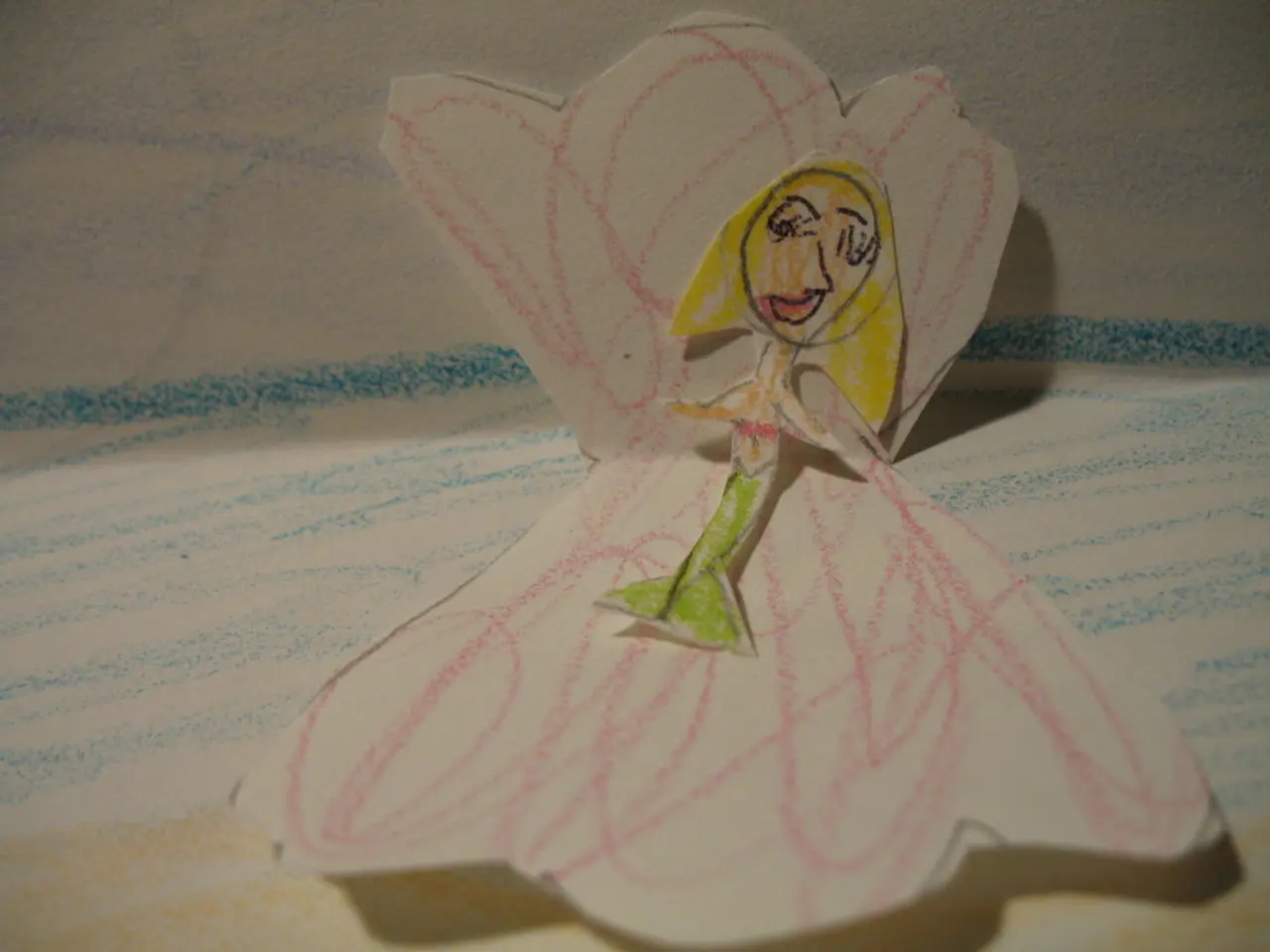Creating Realistic Scene Backdrops for Concept Art Utilizing Photoshop and Blender Techniques
In the creative world of video game development at Flix Interactive, concept artist Edward has honed a unique workflow for crafting detailed personal projects in 3D using Blender.
Design Sketches
The process begins with 2D concept sketches, establishing the character or object design. These can range from rough sketches to combinations of multiple concepts, creating a unique design foundation.
3D Blockout
Moving into Blender, Edward builds a basic 3D blockout to save time later in the process. The mesh is kept simple and clean, focusing on capturing the silhouette rather than details.
Adding Details
Gradually, the blockout is refined by increasing mesh density and adding finer geometry. Techniques such as subdividing the mesh and using modifiers help to create recognizable detailed features quickly. Details are added step-by-step, usually without obsessing over high mesh complexity if the final visual looks correct.
Color and Texture
Next, Edward develops materials using a PBR (Physically Based Rendering) workflow, combining procedural textures and natural details to simulate shading. Texturing may also involve baking or generating passes for realism.
Painting and Overpainting in Photoshop
Once the 3D elements are ready, Edward renders multiple layers and passes in Blender at high resolution and brings these layers into Photoshop for further painting, tweaking, and compositing. This allows for non-destructive colour adjustments and adding painterly effects to refine the image and add polish.
Final Adjustments
Using Blender's rendering features, Edward fine-tunes lighting and shadow effects, balancing render time and output fidelity. Final compositing and retouching happen mainly in Photoshop, where layer organization aids the workflow.
Additional Techniques
Edward employs various techniques to enhance his work. Atmospheric perspective is used to control values, such as dust clouds, steam, or smoke. The Sanctus library add-on for Blender is used to apply basic textures or colors.
Photobashing is used to control values and amount of detail, ensuring elements don't stand out. Levels adjustment layers are added to enhance lighting effects, and a group with a black filled layer set to Colour mode, and a Posterize adjustment layer set to three levels, is created to check the values.
Grounding the Concept
To ground the concept in the real world and make it feel more lived in, Edward adds wear and tear to objects and incorporates smaller rocks and plant life to make the world feel more alive. Ignoring callouts in a concept artist's portfolio can indicate a lack of understanding of the task.
Usable Concepts
To turn the piece into a usable concept for 3D artists, Edward provides callouts. He also utilises 3D details from museums that offer free licenses for added details.
Edward's workflow balances speed, creativity, and technical control, allowing him to produce detailed and visually appealing 3D personal projects efficiently. It emphasises iterative refinement from sketches to detailed textured renders combined with digital painting polish.
In the realm of digital art, these unique workflow steps serve as inspiration for other artists crafting their own 3D personal projects.The art of sketching lays the foundation for establishing the character or object design in these creations.Tutorials on 3D modeling and rendering often reference Edward's seamless transition from 2D sketches to 3D blockouts.A clean and simple 3D blockout saves time in the later stages of the process, focused on capturing the silhouette before delving into details.Refining the blockout involves increasing mesh density and using techniques like subdivision and modifiers to create recognizable, detailed features.PBR (Physically Based Rendering) workflow is employed to develop materials, combining procedural textures and natural details for realistic shading.Edward's process of painting and overpainting in Photoshop allows for non-destructive color adjustments and adding painterly effects to refine the image.Within the digital art community, Edward's attention to detail and use of shadow and lighting effects have been noted as key elements of his style.Careful observation of Edward's portfolio demonstrates his mastery in balancing creativity with technical control, producing visually appealing 3D designs.His logo designs have made a mark in the realm of UX and UI, showcasing his prowess in graphic design.As the field of artificial intelligence expands in the tech industry, artists like Edward are exploring its potential in 3D and 2D art, merging analog techniques with AI algorithms for innovative creations.In the context of lifestyle, home-and-garden, and technology, Edward's work offers an imaginative perspective, adding a touch of creativity that transcends traditional boundaries.




